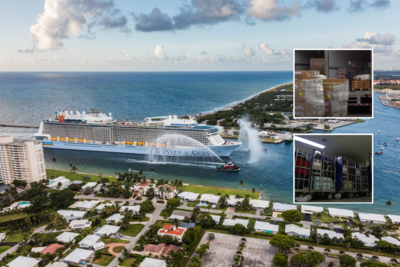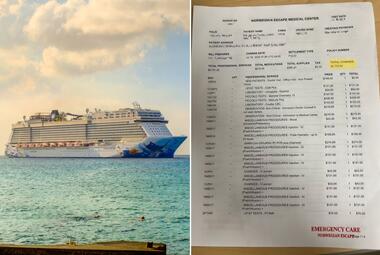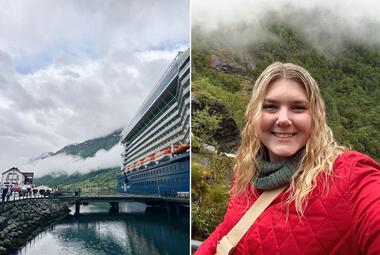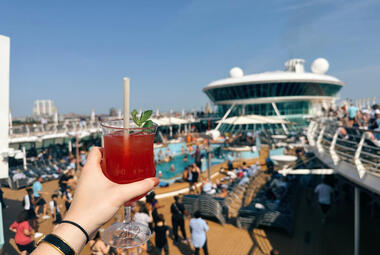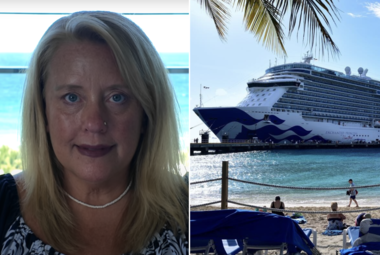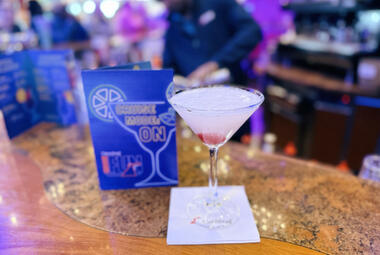While you're busy preparing to disembark the ship and return home, crew members are already thinking about the next set of guests scheduled to board the same day. Though passengers may think of it as embarkation or disembarkation day, those within the cruise industry refer to it as turnaround day.
When guests are enjoying their final moments on the ship before getting off, crew and port employees restock the ship with the supplies necessary for the sailing, refueling, cleaning, offloading and reloading luggage, doing laundry, and so much more.
To ensure that everything gets done, cruise lines have elaborate schedules with tasks assigned to specific teams, from the culinary staff to cabin stewards. In other words, turnaround day is a carefully orchestrated process.
On some of the world's largest cruise ships, over 2,000 crew members spring into action as early as 6:30am to begin prepping for the next sailing
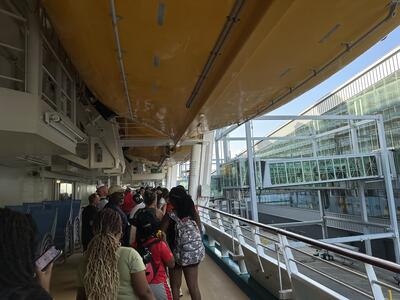
Typically, cruise ships return to the terminal early in the morning. It's not uncommon to be docked by 6:00am or 7:00am. Then, cruise lines must file paperwork with the local authorities for the disembarkation process to begin.
This is why it's suggested to book a return flight no earlier than 11:00am or 12:00pm, as passengers cannot get off the ship until it has been cleared by port officials and customs authorities. If there are any disembarkation delays, you may miss your flight home. Navigating the rebooking process isn't a fun way to end your trip!
When the ship is cleared, crew members begin offloading and reloading materials for the next sailing— think food (like 5,400 lobster tails), beverages (including plenty of alcohol), toilet paper, medical supplies, light bulbs, cleaning products, and more, as well as guests' luggage.
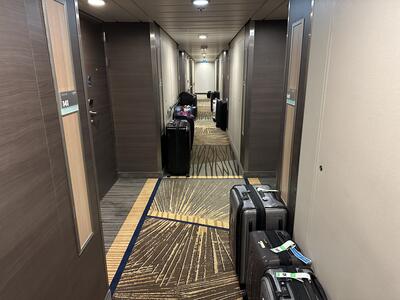
Though passengers can carry their luggage off the ship, many guests opt to leave their larger suitcases outside the night before disembarkation. Those retrieved by the ship's staff have to be transported to the terminal once the ship is cleared to be collected before guests can officially begin their journeys home. Luggage is collected based on color or tag number, which indicates guests' disembarkation time.
All food brought onboard is inspected by the chef, including specifically sourced meats, herbs, and fresh fruits and vegetables. Speaking of fruits, did you know that bananas are brought onboard in three different stages to ensure guests always have a ripe one?
Cruise ships have to be supplied with nearly everything passengers and crew will need for the sailing. Rather than bringing enough inventory onboard for a 3- or 7-night cruise, some supplies are brought on in excess in case there's a delay returning to port.

There has to be enough food, for instance, to produce roughly 30,000 meals per day on the largest ships at sea. Guests onboard Symphony of the Seas can go through 3,200 slices of pizza in one hour alone! If cruise lines only provided enough inventory for 5 days but the ship was stuck at sea due to a storm, there wouldn't be enough food onboard to sustain everyone until the ship was able to safely return to port.
At the same time, the process of unloading waste begins, including leftover food and human waste. To streamline the process, Royal Caribbean ships, for instance, have a designated waste and recycling center with separate teams responsible for incoming items like glass, cardboard, metal, and plastic.
Cruise ships have incinerators and compactors for processing plastic, waste, too, with the compactor on larger ships crushing as many as 528 gallons of water bottlers per sailing. All of this is removed from the vessel upon arriving back at the terminal before the next set of guests can officially set sail.

Meanwhile, those onboard spend time cleaning and sanitizing public areas, as well as flipping thousands of staterooms; there's work actively being done on each deck of the ship. On disembarkation day, passengers are typically asked to vacate their cabins by a specific time to give cabin stewards ample time to prepare them for incoming guests.
On ships like Carnival Celebration and Icon of the Seas, there are upwards of 2,600 cabins that need to be cleaned. The process includes removing all dirty laundry from the stateroom and taking it to the onboard laundromat, replacing linens and towels, cleaning and sanitizing the bathroom, dusting and vacuuming the cabin, restocking amenities such as bottled water, leaving any relevant documentation, and more.
Though they'll service your stateroom daily, the work put into the cabin on turnaround day is much more thorough. They don't get any days off to ensure that staterooms are always maintained, whether for guests on their current voyage or the next.
Everything has to be completed in under 10 hours
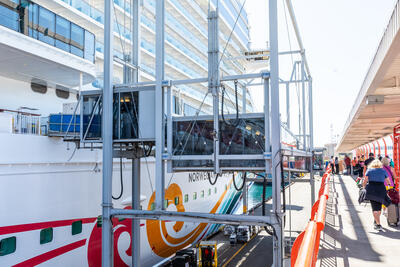
While crew members are ensuring that the ship is ready to hit the high seas again, another set of passengers is finishing their physical check-in process and boarding the ship. Typically, guests from the previous sailing have to be off the ship by 9:30am, with the next boarding process beginning as early as 10:00am or 11:00am.
When the next group of passengers is onboard, certain venues have to be open and ready, including the bars, pools, and certain restaurants. Moreover, certain lines, such as Celebrity Cruises and Royal Caribbean, have crew members standing at guests' muster stations, so they can complete the required safety drill on their own time.
SOLAS (Safety of Life at Sea) is an international maritime treaty that mandates new guests must complete the muster drill before sailing away. While each line's muster drill may be implemented a tad differently (Royal Caribbean, for instance, allows passengers to watch safety videos from their mobile devices, while Disney has a single in-person drill), the core purpose remains the same: to familiarize passengers with emergency procedures and safety protocols onboard in the event of an emergency.
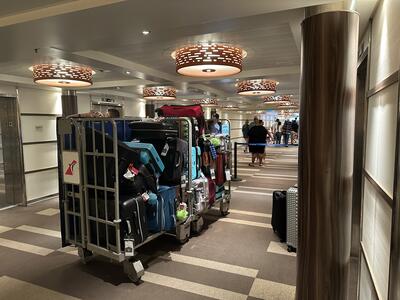
Crew members are also stationed throughout the vessel selling drink packages, spa treatments, specialty dining packages, and more, ensuring that guests have opportunities to enhance their vacation experience before setting sail!
Though thousands of passengers have boarded the ship and begun their highly-anticipated vacation, the work continues in the terminal. All luggage taken by cruise ship porters is loaded onto the ship to be delivered to guests' cabins later in the afternoon.
Before that, however, each suitcase must be screened to ensure it's not carrying prohibited items. If anything is found— think extension cords, portable washing machines, liquor, candles, or cannabis—the bag will be flagged by security and held until the passenger can claim it and either remove the prohibited item or be denied boarding.
Cruise lines make turnaround day look easy
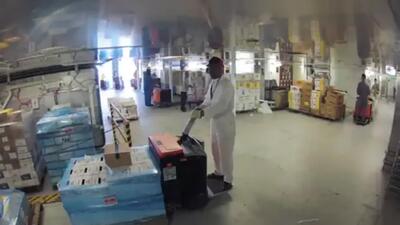
From removing the waste from the previous voyage to stocking up on fresh supplies, cleaning the ship's cabins and public areas, and conducting safety drills, every aspect of turnaround day is calculated to ensure the crew can finish all preparations for a safe and enjoyable cruise.
All crew onboard, from stateroom attendants to high-ranking officers, work together to efficiently complete everything in hours.
Turnaround day is a vital part of cruise ship operations, so when you get onboard your next cruise and enjoy your first cocktail, think about how hard everyone ashore and on the ship is working to make your voyage as smooth as possible!


